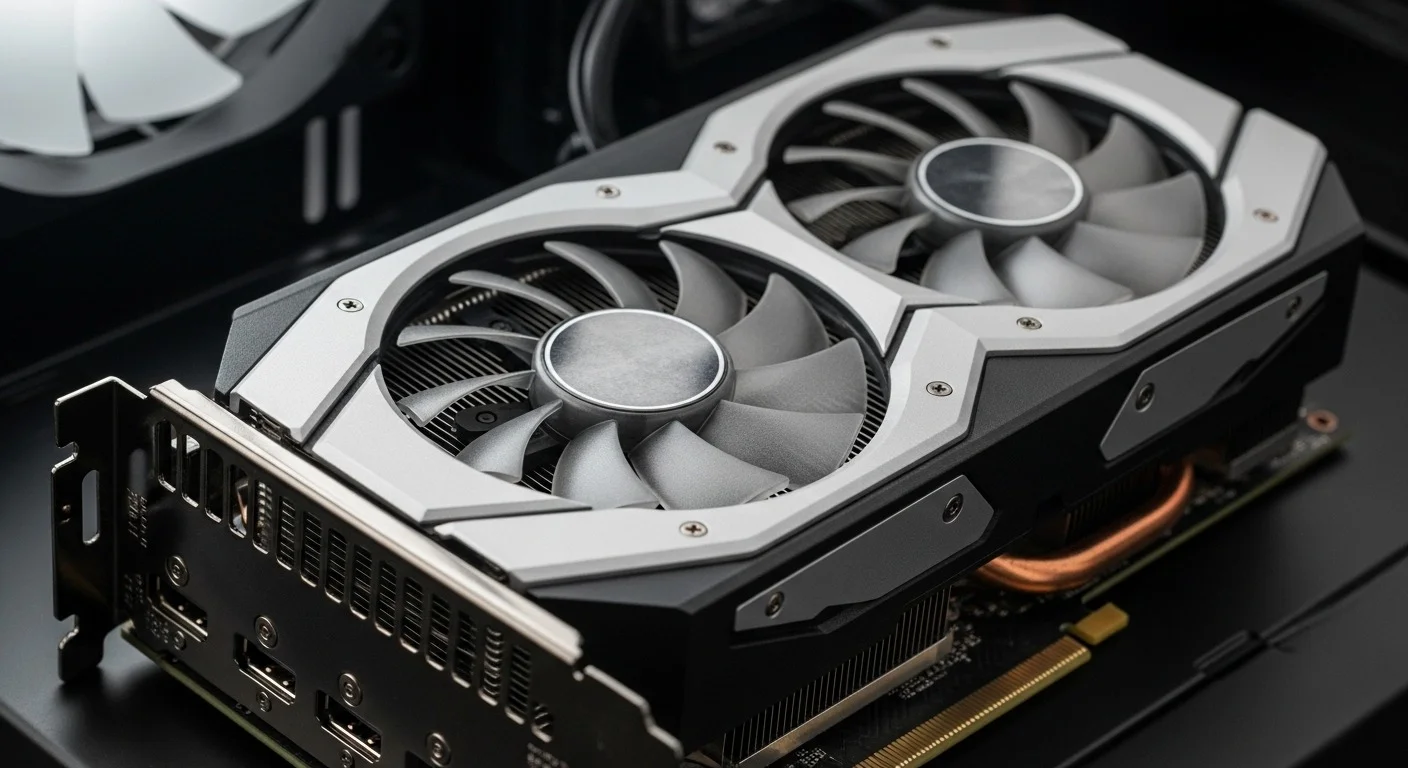Training runs take twice as long as expected. GPU utilization hovers at 40% when it should hit 95%. Expensive accelerators sit idle while waiting for data. These frustrations signal a common but costly problem: GPU bottleneck issues are silently draining productivity and budget.
According to research from Google and Microsoft analyzing millions of machine learning training workloads, up to 70% of model training time gets consumed by I/O operations—meaning GPUs spend most of their time idle, waiting for data rather than performing the computations they're designed for.
For developers and researchers building AI systems, understanding what a GPU bottleneck is and learning how to fix GPU bottleneck problems becomes essential for maximizing infrastructure investment.
What Creates GPU Bottlenecks in AI Systems
Before diving into solutions, understanding the root causes helps target fixes effectively. A GPU bottleneck occurs when GPU compute capacity sits underutilized because other system components cannot keep pace with the accelerator's processing speed.
Unlike gaming scenarios, where bottlenecks often involve CPU limitations, AI workloads face different constraints. The typical machine learning pipeline involves multiple stages: fetching raw data from storage, preprocessing and augmenting it on CPUs, transferring processed batches to GPU memory, performing forward and backward passes, and occasionally checkpointing model state back to storage.
Each stage represents a potential bottleneck. When any component in this pipeline operates slower than the GPU can consume data, the accelerator waits idle. Those idle cycles waste both time and money, particularly when running on expensive cloud GPU instances or managing on-premises hardware with significant capital investment.
Primary Bottleneck Sources
Data Loading and Storage I/O: The most common bottleneck in AI training stems from data pipelines failing to feed GPUs fast enough. Reading training data from remote object storage like S3 or Azure Blob, transferring it over networks, and loading it into system memory all take time. When these operations can't keep pace with GPU consumption, the accelerator stalls waiting for the next batch.
CPU Preprocessing: Many AI workflows perform substantial data preprocessing—image augmentation, text tokenization, audio feature extraction—using CPU resources before GPU training. When preprocessing complexity exceeds CPU capacity relative to GPU speed, a bottleneck forms. This becomes particularly problematic as GPUs grow more powerful across generations while CPU performance improves more gradually.
Memory Bandwidth Limitations: Moving data between system RAM and GPU memory via PCIe introduces latency. While modern PCIe generations offer high bandwidth, extremely large batch sizes, or high-resolution data can saturate these connections. Additionally, insufficient GPU memory forces swapping data in and out, creating further bottlenecks.
Network Communication in Distributed Training: Multi-GPU training requires synchronizing gradients across accelerators. When network bandwidth or latency between GPUs (or between nodes in cluster training) cannot handle the communication volume, training slows significantly. Poor network configuration becomes the limiting factor rather than the compute capacity.
Identifying Bottlenecks: Diagnostic Approaches
Recognizing bottlenecks requires measurement rather than guesswork. Several tools and techniques reveal where pipelines falter.
GPU Utilization Monitoring
The most basic indicator comes from monitoring GPU utilization. Tools like nvidia-smi show real-time GPU usage percentages. Consistently low utilization (below 80-85%) during training suggests bottlenecks elsewhere in the pipeline prevent the GPU from staying busy.
However, high utilization doesn't guarantee efficiency. A GPU might show 100% utilization while still being bottlenecked by memory bandwidth or other factors. More detailed profiling provides clearer pictures.
Framework-Specific Profilers
Modern deep learning frameworks include built-in profilers that identify pipeline stages consuming disproportionate time:
TensorFlow Profiler: Analyzes training loops, highlights input pipeline bottlenecks, and shows device utilization timelines
PyTorch Profiler: Traces CPU and GPU operations, identifies slow operators, and reveals memory usage patterns
NVIDIA Nsight Systems: Provides low-level GPU profiling showing kernel execution, memory transfers, and synchronization events
These tools generate visual timelines showing exactly where time gets spent. When data loading operations consume more time than GPU computations, the bottleneck becomes immediately visible.
Batch Timing Analysis
Simple timing measurements reveal bottlenecks without complex profiling. Measure time per training step with normal data loading, then repeat with synthetic data generated directly in GPU memory (bypassing I/O entirely). Significant speedup with synthetic data confirms I/O bottlenecks.
Similarly, measure preprocessing time independently. If the preprocessing duration approaches or exceeds the GPU step time, CPU operations bottleneck the pipeline.

Common Bottleneck Patterns and Solutions
Bottleneck Type | Symptoms | Primary Solutions |
Storage I/O | High disk latency, low GPU util | Local caching, faster storage, prefetching |
CPU Preprocessing | High CPU usage, GPU waiting | Parallel data loading, GPU preprocessing |
Memory Transfer | PCIe bandwidth saturation | Pinned memory, larger batches, mixed precision |
Distributed Communication | Network saturation, all reduce delays | Gradient accumulation, compression,and better interconnects |
Memory Capacity | Out-of-memory errors, swapping | Smaller batches, gradient checkpointing, model parallelism |
How to Fix GPU Bottleneck: Practical Solutions
Addressing bottlenecks requires targeted interventions based on specific constraints identified through profiling.
Optimize Data Loading Pipelines
When I/O bottlenecks dominate, several strategies improve throughput:
Parallel Data Loading
Modern frameworks support loading and preprocessing data in parallel using multiple worker processes. PyTorch's DataLoader with the num_workers parameter and TensorFlow's tf.data with parallel interleave enable CPU preprocessing to run concurrently with GPU training.
Setting num_workers appropriately matters. Too few workers leave CPU cores underutilized. Too many create excessive overhead from process spawning and inter-process communication. Start with worker count matching available CPU cores, then adjust based on profiling results.
Data Prefetching
Prefetching loads the next batch of data while the GPU processes the current batch, hiding I/O latency behind computation. TensorFlow's .prefetch() and PyTorch's prefetch_factor parameter implement this technique.
Prefetching multiple batches provides a buffer against I/O variability. If occasional storage delays occur, prefetched batches prevent GPU stalls. Experiment with prefetch buffer sizes, balancing memory overhead against I/O smoothness.
Local Data Caching
For datasets accessed repeatedly across training epochs, caching to fast local storage (NVMe SSDs) eliminates remote fetch overhead. First epoch loads from remote storage while populating local cache. Subsequent epochs are read from high-speed local drives.
This approach works particularly well for datasets fitting within available local storage. Cloud instances offering substantial local NVMe capacity enable this optimization without infrastructure changes.
Faster Storage Solutions
When persistent remote data access is necessary, storage system performance directly impacts throughput. Consider:
High-performance object storage with optimized read throughput
Parallel filesystems designed for HPC workloads
Content delivery networks for geographically distributed teams
Dedicated storage clusters with high-bandwidth connections
Accelerate Preprocessing
Moving preprocessing closer to computation reduces CPU bottlenecks.
GPU-Accelerated Preprocessing
Libraries like NVIDIA DALI and TorchVision's GPU transforms move data augmentation and preprocessing to GPUs. While this consumes some GPU compute, the trade-off often improves overall throughput by eliminating CPU bottlenecks.
DALI provides particularly impressive speedups for computer vision workflows, handling image decoding, cropping, resizing, and augmentation entirely on GPUs with optimized kernels.
Simplified Augmentation
Complex augmentation pipelines with heavy CPU operations may bottleneck unnecessarily. Profile preprocessing operations individually to identify expensive transforms. Sometimes, simpler augmentation achieves similar model quality with much lower preprocessing cost.
Mixed Precision Training
Using FP16 or BF16 precision instead of FP32 reduces memory bandwidth requirements and accelerates computations on modern GPUs with Tensor Cores. This enables larger batch sizes within the same memory budget, improving GPU utilization.
Frameworks implement automatic mixed precision training with minimal code changes. PyTorch's torch.cuda.amp and TensorFlow's mixed precision API handle precision conversions automatically while maintaining training stability.
Optimize Distributed Training
Multi-GPU bottlenecks require different approaches.
Gradient Accumulation
When synchronizing gradients across GPUs frequently creates bottlenecks, gradient accumulation reduces communication frequency. Rather than syncing after every batch, accumulate gradients across multiple batches before synchronization.
This trades slightly different training dynamics for reduced communication overhead. Effective batch size increases while maintaining the memory requirements of smaller per-GPU batches.
Gradient Compression
Techniques like gradient quantization and sparsification reduce the data volume exchanged during synchronization. While introducing approximation, many applications tolerate compression with negligible accuracy impact.
Libraries like Horovod support gradient compression options tuned for different network environments and model types.
Optimized Interconnects
Hardware matters substantially for distributed training. High-bandwidth, low-latency interconnects like NVIDIA NVLink within nodes and InfiniBand between nodes dramatically reduce communication bottlenecks compared to standard Ethernet.
When selecting GPU infrastructure—whether cloud instances or on-premises hardware—interconnect capabilities significantly impact multi-GPU scaling efficiency. Platforms like Hyperbolic offer GPU configurations, including H100 SXM and H200, with optimized networking for distributed workloads.
Monitoring and Continuous Optimization
Fixing GPU bottleneck issues isn't one-time work. As models evolve, datasets change, and infrastructure updates occur, new bottlenecks emerge. Implementing continuous monitoring catches performance regressions before they significantly impact productivity.
Establish Baseline Metrics
Record key performance indicators for typical training runs:
Steps per second or images per second throughput
GPU utilization percentages
Time spent in data loading vs computation
Memory usage patterns
Multi-GPU communication overhead
Deviations from baselines signal potential bottlenecks requiring investigation.
Automated Performance Testing
Integrate performance benchmarks into development workflows. Before merging code changes, run abbreviated training runs measuring throughput. This catches regressions from data pipeline modifications or preprocessing changes before they reach production training.
Regular Profiling
Schedule periodic profiling sessions examining training pipeline performance. As models grow and datasets expand, bottleneck locations shift. What worked optimally six months ago may now limit performance.

Infrastructure Considerations for Bottleneck Prevention
Architectural decisions during infrastructure setup prevent many bottleneck scenarios.
Storage Architecture
Designing storage systems specifically for AI workloads prevents I/O bottlenecks:
High-throughput object storage or parallel filesystems, rather than general-purpose solutions
Low-latency network connections between storage and compute
Adequate storage bandwidth provisioned for concurrent training jobs
Caching layers for frequently accessed datasets
GPU Selection
Not all GPUs face identical bottleneck patterns. Consider specifications beyond raw FLOPS:
Memory capacity determines maximum viable batch sizes
Memory bandwidth impacts how quickly data moves to compute units
Interconnect support (NVLink, NVSwitch) enables efficient multi-GPU scaling
Tensor Core availability accelerates mixed-precision training
Network Configuration
Distributed training demands appropriate network infrastructure:
Sufficient bandwidth between GPU nodes
Low-latency switches and interconnects
Proper network topology, avoiding bottlenecks at aggregation points
Isolation from unrelated network traffic
When to Scale Rather Than Optimize
Sometimes optimization hits diminishing returns, and scaling becomes more effective. If single-GPU training achieves high utilization but overall throughput remains insufficient, adding GPUs distributes work rather than squeezing more from individual accelerators.
Cloud GPU platforms enable elastic scaling—adding resources when needed and releasing them when training completes. This flexibility allows matching compute capacity to workload demands without over-provisioning.
Understanding how to fix GPU bottleneck problems transforms expensive GPU infrastructure from underutilized resources into efficient compute engines. The 70% idle time statistic from major cloud providers demonstrates how common these issues are—and how much opportunity exists for improvement.
Systematic identification through profiling, targeted fixes addressing specific bottleneck types, and continuous monitoring catch regressions before they accumulate. Whether training foundation models on clusters of GPUs or fine-tuning smaller models on single accelerators, eliminating bottlenecks maximizes return on infrastructure investment.
About Hyperbolic
Hyperbolic is the on-demand AI cloud made for developers. We provide fast, affordable access to compute, inference, and AI services. Over 195,000 developers use Hyperbolic to train, fine-tune, and deploy models at scale.
Our platform has quickly become a favorite among AI researchers, including those like Andrej Karpathy. We collaborate with teams at Hugging Face, Vercel, Quora, Chatbot Arena, LMSYS, OpenRouter, Black Forest Labs, Stanford, Berkeley, and beyond.
Founded by AI researchers from UC Berkeley and the University of Washington, Hyperbolic is built for the next wave of AI innovation—open, accessible, and developer-first.
Website | X | Discord | LinkedIn | YouTube | GitHub | Documentation
:format(webp))
:format(webp))
:format(webp))
:format(webp))
:format(webp))
:format(webp))
:format(webp))
:format(webp))
:format(webp))
:format(webp))
:format(webp))
:format(webp))
:format(webp))
:format(webp))
:format(webp))
:format(webp))
:format(webp))
:format(webp))
:format(webp))
:format(webp))
:format(webp))
:format(webp))
:format(webp))
:format(webp))
:format(webp))
:format(webp))